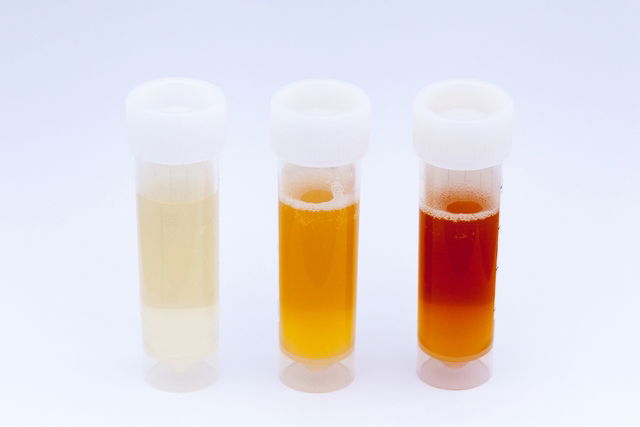RBC in the urine is a test finding that is characterized by the presence of red blood cells in urine. It is usually associated with kidney problems, but it can also happen when a urine sample is collected during a period or after intense exercise.
Urine color changes are usually the first sign of RBC in the urine. Urine will usually have a pink or red tinge, although in some cases, it may just appear cloudy. When blood is noted in the urine, it is referred to as hematuria.
A very small amount of RBCs in the blood can be normal. The normal amount of red blood cells in the urine is up to 4 RBCs per high power field, although this reference value can vary depending on the lab.

What causes RBC in urine?
The presence of red blood cells usually does not cause symptoms. It is usually only noted when the urine has a pink, red or cloudy appearance. Most times it is associated with kidney problems. Complete our online symptom checker to assess your risk for kidney problems.
The most common causes of RBCs in the urine are:
- Urinary tract infections
- Kidney inflammation, due to infections like glomerulonephritis or pyelonephritis
- Prostate changes
- Kidney disease
- Use of medications, like anticoagulants
- The presence of bladder or kidney stones
- Renal cancer
In women, it is possible notice the presence of blood in the urine during a period. For this reason, urine collection is not recommended during this time, as the urine will likely present with menstrual blood. However, if blood is noted in the urine outside of a normal period, women should still consult their gynecologist for more thorough testing.
Although RBCs in the urine are usually a result of kidney issues, it can also occur with excessive physical activity, which can lead to a bladder injury or dehydration. Nonetheless, RBCs in the urine from too much exercise is rare.
If you notice any changes to your urine, you should seek medical attention for further testing and treatment as indicated.
Read more about other causes of blood in the urine and what to do to treat it.
Confirming diagnosis
The presence of RBC in the urine is usually noted due to changes to urine color. Blood in the urine can make the urine more pink, red or dark in color, depending on the amount of RBCs present. RBCs can also be visualized through a microscope - this lab analysis looks for the quantity of intact red blood cells, as well as products of red blood cell breakdown, like hemoglobin.
RBCs in the urine can present with urinary casts, which are tubular structures formed by blood cells, as well as leukocytes and crystals. Learn more about what causes leukocytes in the urine.
Treatment options
Treatment of red blood cells should be oriented by a doctor, and will depend on the underlying cause. High red blood cell counts from infections can be treated with antibiotics to combat the infectious agent, which will eventually decrease the amount of RBC in the urine.
If stones are present in the kidneys or bladder, stone removal is often recommended through a small surgical procedure. Following removal, red urine may still be noted, although it will typically return to its normal color.
